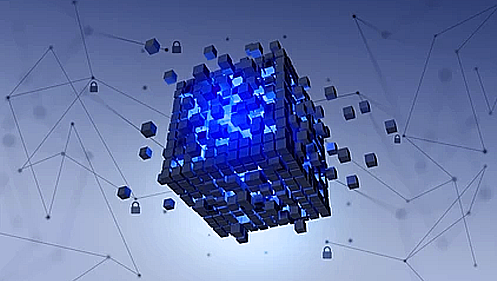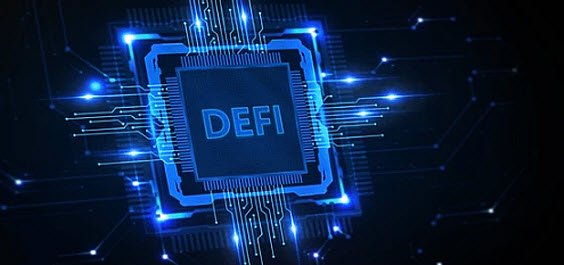Accredited InvestorsAltcoinAnatoli UnitskyAnti-Money Laundering (AML) In CryptoAPIArbitrageArtCoin TokenArticle DirectoryASICAuction Terminology GlossaryBasics of Stock Market InvestingBear MarketBest Crypto Payment Provider In the WorldBitcoinBlockchainBlockchain ConfirmationBlockchain Consensus MechanismBlockchain ForkBlockchain GlossaryBored Ape Yacht ClubBuild a Business That OutperformsBull MarketBuying SkyWay SharesByzantine Fault Tolerance (BFT) ExplainedCasascius CoinCentral Bank Digital Currency (CBDC)Centralized Crypto ExchangeCoinCoinsetCold WalletCollateralCommodity Futures Trading Commission (CFTC)Cross-Chain TechnologyCRUCrypto ExchangeCrypto GlossaryCrypto JokesCrypto Terms to KnowCrypto TickerCryptocurrencyCryptographyCryptojackingCryptounit BlockchainCryptounit GlossaryCryptounit ProgramdApp (Decentralized Application)Dead CoinDecentralized Exchange (DEX)Decentralized Finance (DeFi)Difference Between Bitcoin and EthereumDifferent Ways of Investing MoneyDigital CurrencyDistributed LedgerDo Your Own Research (DYOR)Dollar Cost Averaging (DCA)Dow Jones Industrial Average (DJIA)EncryptionERC-20ERC-721EthereumEvoScentFear Of Missing Out (FOMO)Fear, Uncertainty and Doubt (FUD)Fiat MoneyFNT Fintech CompanyGenesis BlockGlobal Unit PayGlossary of Banking TermsGlossary of Business TermsGlossary of Financial TermsHalvingHODLHot WalletHow Do I Start InvestingHow Rich is Satoshi Nakamoto?How to Create a BlockchainHow to Find Private InvestorsHow to Get Into FintechHow to Program Smart ContractsI Am Thrilled to Be a Part of This Global ProjectInitial Coin Offering (ICO)Initial Public Offering (IPO)Initial Token Offering (ITO)Innovation Basalt TechnologyInnovative Transportation TechnologiesInternational Bank Account Number (IBAN)Investing in Gold Mining StocksInvesting in Gold MiningJagerJoy of Missing Out (JOMO)Know Your Customer (KYC)LedgerLiquidity in CryptocurrencyMaker and Taker Fees in Crypto TradingMarket Capitalization (Market Cap)Meme CoinMetal Credit CardMetaMaskMillenials Now Have Access to Generational WealthMy Best Investment EverNew Digital EvolutionNFT GlossaryOff-Chain TransactionsOn-Chain TransactionsOpen Edition NFTPeer-to-Peer (P2P)Personal Loan GlossaryProbably the Best STO on the MarketProof of Stake (PoS)Real Estate Glossary of TermsReal Estate Investing GlossaryRebase TokenSecurities and Exchange Commission (SEC)Security Token ExchangesSecurity Token Offering (STO)Soulbound Decentralized Identities for Security TokensSoulbound ID Launch by Stobox Proves a SuccessSoulbound TokensStoboxStock Market GlossaryTestimonialsTether Platform and Token (USDT)UnitEx ExchangeUnitsky String TechnologiesUNTBUSDUValidatorWe Started Investing When We Were 25What are Blue Chip NFT?What are Blue Chip Stocks?What are Crypto Assets?What are Crypto Smart Contracts?What are CryptoPunks NFT?What are Digital Assets?What are Digital Collectibles?What are Gas Fees?What are Gas Wars?What are Hashmasks?What are Non Fungible Tokens?What are Non-Sufficient Funds (NSF)?What are Soulbound Tokens (SBT)?What are Stablecoins in Crypto?What are Transactions Per Second (TPS)?What are Utility NFTs?What are Utility Tokens?What Does Burning Crypto Mean?What Does Diamond Hands Mean?What Does Paper Hands Mean?What Does To The Moon Mean?What Does WAGMI Mean?What Happened to Satoshi Nakamoto?What is a 51% Attack?What is a Baby Boomer?What is a Backlink?What is a Banner?What is a Barcode?What is a Bid-Ask Spread in Crypto?What is a Block in Blockchain?What is a Block Reward?What is a Blockchain Address?What is a Blockchain Node?What is a Blockchain Oracle?What is a Blog?What is a Bond?What is a Bot?What is a Broker?What is a Business Accelerator?What is a Cash Cow?What is a Commercial Bank?What is a Commodity?What is a Con?What is a Credit?What is a Credit Limit?What is a Credit Rating?What is a Crypto Airdrop?What is a Crypto Bridge?What is a Crypto Scam?What is a Crypto Token?What is a Crypto Wallet?What is a Crypto Whale?What is a Crypto Winter?What is a Cryptocurrency Public Ledger?What is a Cryptocurrency Roadmap?What is a DAO?What is a Dark Pool?What is a Day Trader?What is a Dead Cat Bounce?What is a Default?What is a Derivative?What is a Digital Credit Card?What is a Fiscal Quarter?What is a Fungible Token?What is a Governance Token?What is a Grace Period?What is a Hard Fork?What is a Hot Wallet?What is a Hybrid Blockchain?What is a Hybrid PoW/PoS?What is a Joint Account?What is a Market Cap?What is a Merkle Tree in Blockchain?What is a Mining Farm?What is a Nonce? What is a PFP NFT?What is a POS System?What is a Prepaid Card?What is a Private Blockchain?What is a Private Key?What is a Public Blockchain?What is a Public Key?What is a Reserve Currency?What is a Ring Signature?What is a Routing Number?What is a Rug Pull in Crypto?What is a Safe Deposit Box?What is a Satoshi?What is a Security Token?What is a Seed Phrase?What is a Shitcoin?What is a Sidechain?What is a Soft Fork?What is a Spot Market?What is a State Bank?What is a SWIFT Code?What is a Tax Identification Number (TIN)?What is a Time Deposit?What is a Transaction Account?What is a Variable Interest Rate?What is a Virtual Assistant (VA)?What is a Virtual Card?What is a Virtual Currency?What is a Visa Card?What is a Whitelist in Crypto?What is a Whitepaper?What is Accounts Payable (AP)?What is AMA in Crypto?What is Amortization?What is an Accrual?What is an ACH Transfer?What is an Actuary?What is an Addendum?What is an Algorithm?What is an Angel Investor?What is an Annuity?What is an Asset?What is an ATM?What is an Atomic Swap?What is an Audit?What is an Avatar?What is an EIN?What is an Embargo?What is an Entrepreneur?What is an IDO (Initial Dex Offering)?What is an Interest Rate?What is an Internet cookie?What is an Investment Bank?What is an NFT Drop?What is an NFT Floor Price?What is an Ommer Block?What is an Orphan Block?What is an Outstanding Check?What is an Overdraft?What is Artificial Intelligence (AI)?What is B2B (Business-to-Business)?What is B2G (Business-to-Government)?What is Bartering?What is Bitcoin Dominance?What is Bitcoin Pizza Day?What is Blockchain Immutability?What is Blockchain Used For?What is BRICS?What is Business-to-Consumer (B2C)?What is C2C (Customer to Customer)?What is Capitalism?What is Catfishing?What is CFD Trading?What is Check Kiting?What is Cloud Mining?What is Communism?What is Content Marketing?What is Decentralization in Blockchain?What is DeFi in Crypto?What is Delisting?What is Depreciation?What is Digital Marketing?What is Diversification?What is Double Spending?What is Dumb Money?What is Dumping?What is Earnings Per Share (EPS)?What is Economics?What is Email Marketing?What is Equity?What is Etherscan?What is Fintech?What is Foreign currency?What is Forex?What is Fundamental Analysis (FA)?What is GameFi?What is Generative Art NFT?What is Gwei?What is Hard Currency?What is Hash Rate?What is Hashing in Blockchain?What is Inflation?What is Initial Game Offering (IGO)?What is Interest?What is Interest Income?What is Mainnet?What is Mastercard?What is Metaverse in Crypto?What is Mining in Cryptocurrency?What is Minting NFT?What is Mobile Banking?What is Money Laundering?What is NFT Alpha?What is NFT Metadata?What is NFT Rarity?What is NGMI Meaning?What is Nominal Interest Rate?What is Online Banking?What is Open-End Credit?What is OpenSea NFT Marketplace?What is Personal Identification Number (PIN)?What is Play-to-Earn?What is Polygon?What is Proof of Authority (PoA)?What is Proof of Work (PoW)?What is Public Key Cryptography?What is Pump and Dump?What is Quantum Computing?What is Refinancing?What is Retail Banking?What is Ripple?What is Sharding?What is Slippage in Crypto?What is Smart Money?What is Solvency?What is Soulbound ID?What is SSL?What is Staking in Cryptocurrency?What is Technical Analysis (TA)?What is Testnet?What is the Ask Price?What is the Better Business Bureau (BBB)?What is the Bid Price?What is the Dark Web?What is the InterPlanetary File System (IPFS)?What is the Gold Standard?What is the Lightning Network?What is the Prime Rate?What is the Sandbox?What is the Secondary Market?What is the World Bank?What is Tier 1 Capital?What is Tokenomics?What is TRC-20?What is Universal Banking?What is Unspent Transaction Output (UTXO)?What is Usury?What is Volatility in Crypto?What is Wash Trading?What is Web3?What is Whisper?What is XRP?What is Zero-Knowledge Proof (ZKP)?Who is Beeple?Who is Satoshi Nakamoto?Who is Vitalik Buterin?Why Tokenization is a Safe HavenWhy You Should Try Your Hand at Trading
What is Web3?
- Home
- Blockchain Glossary
- What is Web3?
In the early 1990s, the World Wide Web emerged as a new frontier for communication, commerce, and innovation.

However, a small group of centralized organizations have gained control over significant portions of the Web, dictating what content is permissible or not.
Web3 presents a resolution to this predicament. Instead of a Web dominated by powerful tech corporations, Web3 promotes decentralization and is being developed, managed, and possessed by its users. Web3 empowers individuals instead of corporations by giving them control.
What is Web3?
Web3, also known as the decentralized web, is a new paradigm for the Web that aims to address these issues. At its core, Web3 is a network of decentralized applications (dApps) that operate on a decentralized infrastructure, allowing users to interact with each other and exchange value without the need for intermediaries.
The decentralized infrastructure of Web3 is powered by blockchain technology, a distributed ledger that records transactions and stores data in a secure and transparent manner. Blockchain technology provides a tamper-proof record of all interactions on the network, making it difficult for malicious actors to manipulate data or steal information.
One of the key features of Web3 is its focus on user control and ownership of data. In the current Web, users' data is often controlled and monetized by large corporations, leaving users with little control over their personal information. Web3, on the other hand, allows users to own and control their data, granting them the ability to choose how and when their data is shared.
Web3 also has the potential to address issues of censorship and access to information. Since the Web3 infrastructure is decentralized, there is no central authority that can control or limit access to content. This makes Web3 a powerful tool for promoting freedom of speech and allowing individuals to access information that may be restricted in their country or region.
Another significant advantage of Web3 is its potential to enable new forms of economic activity. The decentralized infrastructure of Web3 allows for the creation and exchange of digital assets, such as cryptocurrencies and non-fungible tokens (NFTs). This has opened up new opportunities for creators, artists, and entrepreneurs to monetize their work and build new business models.
Understand Web3 by Understanding Web1 and Web2
Web1 and Web2 are terms used to describe the evolution of the World Wide Web over the past few decades. Each generation of the Web has brought new technologies and capabilities, shaping the way we interact with each other and the online world.
Web1, also known as the static web, refers to the earliest version of the Web that emerged in the 1990s. The static web was characterized by simple, static HTML pages that provided information to users, but did not allow for much interactivity or user-generated content. During this era, the Web was primarily used for browsing and reading, rather than for interaction or communication.
Web2, on the other hand, refers to the current generation of the Web that emerged in the early 2000s. Web2 is often described as the social web, as it enabled new forms of social interaction and user-generated content. The Web2 era was characterized by the rise of social media platforms, such as Facebook, Twitter, and Instagram, which allowed users to create and share content with each other in real-time. Web2 also saw the emergence of cloud computing, which made it possible to store and access data from anywhere in the world.
One of the key features of Web2 was the rise of the platform economy, where large corporations, such as Google, Facebook, and Amazon, gained enormous power and control over the online ecosystem. These platforms became central gatekeepers, controlling access to information, communication, and commerce. The centralization of Web2 led to concerns about privacy, security, and the concentration of power in the hands of a few large corporations.
As the limitations of Web2 became more apparent, researchers and developers began exploring new ways to decentralize the Web and give users more control over their data and online interactions. This led to the emergence of Web3, the next generation of the Web that is built on decentralized infrastructure and aims to address the shortcomings of Web2.
When Will Web3 be Implemented?
Web3 is already being implemented and developed by various companies, organizations, and individuals in the blockchain and cryptocurrency space. However, the implementation of Web3 is an ongoing process, and it will likely take several years for it to be fully realized.
Web3 development is a complex and challenging process that requires the integration of various technologies, including blockchain, smart contracts, decentralized storage, and decentralized identity. Additionally, Web3 development requires collaboration among developers, businesses, regulators, and other stakeholders to ensure that the infrastructure and applications are secure, scalable, and user-friendly.
Many Web3 projects and applications are already live and functional, such as decentralized exchanges (DEXs), decentralized finance (DeFi) platforms, and decentralized social networks. However, the full implementation of Web3 will require widespread adoption and integration of these technologies, which may take several more years to achieve.
Related Articles

dApp
Decentralized Applications (dApps) are a new type of software application that is rapidly gaining popularity due to its unique features and benefits. Unlike traditional applications, dApps are...

Blockchain
Blockchain transactions take place on a peer-to-peer network of geographically dispersed computers (nodes). Each node keeps a copy of...

Decentralized Exchange (DEX)
Smart contracts are the foundation of a decentralized exchange. They use liquidity pools to allow token holders to lock their cryptocurrencies into DEX to facilitate trading orders while...

Decentralized Finance (DeFi)
There are several forms of DeFi services within these three categories. Funding protocols, software development tools, subscription payment methods, and...
- Home
- Blockchain Glossary
- What is Web3?